
If you dug ALMOST HUMAN, that ‘80s alien abduction/slasher/body horror flick from a few years ago, then Joe Begos’ follow-up, THE MIND’S EYE, should very much tickle your fancy.
This time, Begos is tackling the telekinesis subgenre, with heavy influences of THE FURY and FIRESTARTER on display. Like with the last film, THE MIND’S EYE gets a great deal of mileage from the obvious fun and passion being exhibited on both sides of the camera, from the ridiculously over-the-top performance by John Speredakos as the film’s villain to the numerous, inventive gore moments (let’s just say SCANNERS and THE FURY have some head-exploding competition). In a summer even much of the better films feel squarely like assembly-line product, it’s refreshing to have a film where it’s plainly obvious that every decision was made squarely to make the biggest, hardest impact with its audience, and not to land the film on as many nationwide screens as possible.
Begos brought some key holdovers over from ALMOST HUMAN, including partner (and rising editor) Josh Ethier and his leading man, Graham Skipper. Here, Skipper plays a telekinetic attempting to rescue his similarly-gifted girlfriend from a nefarious institute run by Speredakos’ power-mad Dr. Slovak. Among the things involved in this quest are his head-throbbing abilities, characters played by horror staple Larry Fessenden and an eyepatched Noah Segan, understandably disbelieving authority figures, and a whole bunch of nasty, psychically-induced bloodletting.
I hadn’t done any interviews in a while, but Joe’s an easy guy to talk to, and one who knows his shit regarding the horror world, so it was great to chat with him about doing another micro-budget horror film after the success of ALMOST HUMAN, the benefits of shooting gore and makeup effects in-camera, and his admirable desire to continue making these movies exactly the way he wants to:
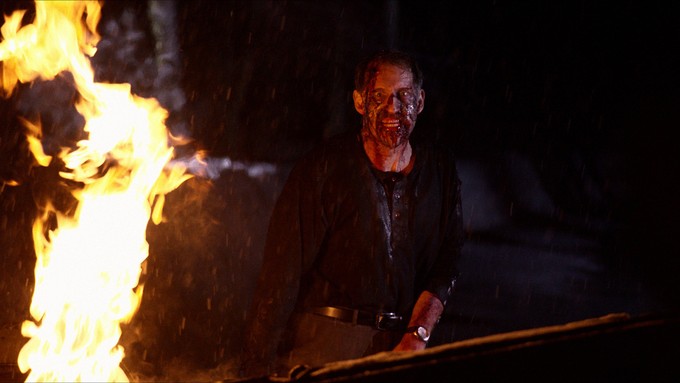
VINYARD: Your first film was more influenced by body horror and Cronenberg, this one’s more in the FIRESTARTER/SCANNERS/THE FURY kind of vein. What was the jump like going from ALMOST HUMAN to this?
BEGOS: I think when we talked, I might have actually had the seed of the idea for this because I started just talking when people were asking me during the last marketing run, “What are you doing next?” So I started thinking about that, and I came up with the idea of a telekinesis movie because I hadn’t seen one in a long time. You got CHRONICLE and the CARRIE remake and shit like that, but nothing that appealed to my sensibilities. I just wanted to do something I hadn’t seen in a long time, I wanted to do a really gory telekinesis movie. And I am super drawn to action scenes and set pieces and really fast pacing, you know? I’m the kind of guy that likes ALIENS over ALIEN, so I wanted to attack my telekinesis movie like that because I hadn’t seen that in a long time. I knew, or hoped, that I’d have a little bit more money, so I built the set pieces up a lot bigger in this than I could in the last one. That was definitely interesting, having the same sized crew as a $50,000 movie, but you have professionals and pyrotechnicians who are blowing shit up, it was an interesting juxtaposition.
VINYARD: It would’ve probably been easier if you went the studio route. Did you consider pitching this to financiers for a bigger budget and a studio crew?
BEGOS: I knew writing the script it wouldn’t be a studio film per se, but I was hoping to get a little bit more money for it, like a million dollars or something like that. I’d written it to be with a production company, all legit like that, but not a lot of people were responding to it. They thought the movie couldn’t be done for a million dollars. They thought that it was way too gory. It was weird, one of the biggest notes I got was, “I don’t understand…how are you going to shoot the telekinesis? Are the people just gonna stare at each other?” And that really pissed me off. I’d also written the role for Graham, who I think could lead a million dollar movie but a lot of people seem to think otherwise. There was a lot of pushback, and I refused to change anything because…I’m just difficult I guess, and I wanted to make the movie that I wanted to make, so… we had to make the movie for a lot less than I wanted to. It ended up costing a few hundred grand. We were able to do everything in the script that so many people told us we wouldn’t be able to do for a million dollars, which felt very good.
VINYARD: Was the fact that you were going to do it all practical a concern as well? Because all that gore is achieved in-camera.
BEGOS: No one really understood how I was going to do it. They said it’d take too much time. But when I went to financiers, I had a budget in place and a schedule for almost seven weeks. “I know that we need this time to do all this,” and that’s why the script is so descriptive. I’d spend a page explaining what’s essentially gonna be 12 seconds of screentime because I think it’s important for them to know what that’s going to constitute and why I’m going to take a day and a half to shoot 12 seconds of footage. For me, it wasn’t daunting because I was more excited to have these tools and to figure out how to actually make it work. That’s what’s exciting to me, figuring out how to make it work when everyone gets together on set. That’s another thing too when you’re on set with practical effects. If you shoot it and it doesn’t look right, you can direct the scene to work right. You can direct your crew members and everyone can come to a conclusion, as opposed to if you just shoot a plate and then some fuckin’ dork in Burbank does the effect and what you got it what you’re stuck with. You can’t direct it or anything like that. It wasn’t daunting for me, it was just a lot of people asking, “How’re you gonna do this?” I had an idea of how we were going to try everything, but it was kind of annoying that no one wanted to at least try that, you know what I mean?
VINYARD: When it came time to shoot them, were there any gags that gave you more trouble than others?
BEGOS: There were a couple we had trouble doing. The head split, I know everyone was really nervous about, but I saw the sculpts and thought they all looked really good, and I knew how I was going to shoot it, so I wasn’t really concerned with that. I was doing a lot of whip pans with the effects and I was operating the camera, so the makeup effects guys were really concerned I wasn’t going to land the camera moves and their effects would be blown, but thankfully we all came together and it looks fuckin’ awesome. The body rip was something that was a bit of a pain in the ass because there were so many wires in so many different directions and so many puppets and people. We had to people pulling wires, we had two effects puppeteers pumping blood, we had the actors and gaffers who were blocking out the lights to create the strobe effects. We shot it in a room that was 7x13, and had 6-foot ceilings, so you can imagine trying to rig all that shit up, pull a body apart across the room, with only 7 feet across, and get frames that I can actually shoot it in. Fucking awful. I didn’t think about that ahead of time, like, “I’m gonna have 12 different machines puppeteering four different things in this tiny room, and shoot it wide ‘cause I want to see the body ripping in half. If you shoot it close-up, what’s the fuckin’ point.” It was stuff like that that I wasn’t used to, but I’m glad I dove into first because now I feel like I can make another movie for this budget and make it twice as big.
VINYARD: You worked with new makeup guys than ALMOST HUMAN.
BEGOS: Yeah, I actually sought these guys out, Pete Gerner and Brian Spears, because of their work. They do a lot of Glass Eye stuff with (Larry) Fessenden. They did STAKE LAND which is under a million bucks and has absolutely phenomenal makeup effects, especially with two guys. There’s so many vampires in that movie, there’s so many gags. All the effects in that look great and they shot that in upstate New York which is really close to where we were shooting. I reached out for them from the getgo and gave them the script. They were excited about it because of all the gags and all the cool stuff they usually don’t get to do, although they forewarned me that I was going to have to cut some stuff, which did not happen. In fact, I added stuff on the day because those guys, as worried as they were, just knocked everything out of the park. Knowing what they can do, I’m going to really, really push their limits on this next movie.
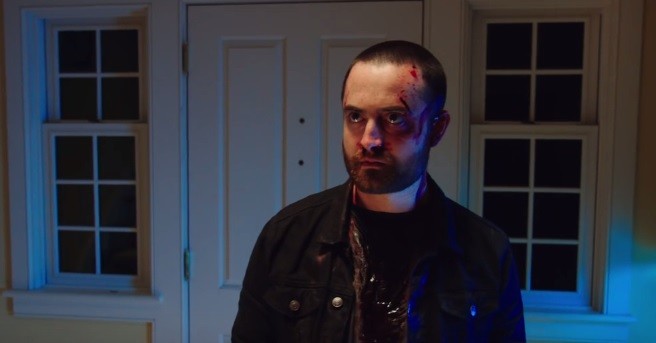
VINYARD: It’s cool that you stuck it out for Graham, because he’s one of my favorite parts of both your films. He adds a ton as your lead.
BEGOS: ALMOST HUMAN was a tough shoot, and it was a real big pain in the ass. Graham, including being awesome onscreen, is just a phenomenal performer. He’s down to do whatever you need to do, and his biggest concern is the movie. I just wanted to work with him again. He has a blue-collar sensibility, so I figured that he’d always be in my movies. When I decided to do a movie about telekinesis, his eyes are just so big and he has this great face and sensibility to him where I figured, “Fuck, we might have to do this movie low-budget again, but either way I want to actually develop this role for you. I want to write a role for somebody, I’ve never been able to do that, so let’s just go fuckin’ do this this way.” So I was able to share with him every draft and really work it out that way. I think that with horror movies, I don’t like having people who are well known. Graham’s been in some movies but he’s not exactly a well-known face, so it was really important to me for Graham to be in that movie. I knew that it was going to be a really tough shoot with a ton of stunts, a ton of effects, a ton of long nights, and I knew that he’d be there with us doing it. I have strong feelings about sticking with your gut, and that’s always favored me well, to just go with my gut, and I just couldn’t cast anybody else besides Graham. I can’t picture anybody else for that role. And I also kept telling him to shave his head, which I guess he’s never had. He’s had the same haircut for like 20 years, which I told him was the problem, but when I told him he had to shave his head, he was very anxious about doing it. I think he looks fuckin’ awesome, and I wish that he’d have a shaved head in more movies.
VINYARD: I love Noah Segan’s look in the movie.
BEGOS: I met Noah at Fantastic Fest. ALMOST HUMAN premiered there and he came and saw the movie. Right off the bat, he’s just like, “Next thing you do, I want to work with you.” When I was writing the script, I sort of had him in mind. I didn’t know if he was actually going to do it when I was writing the script, but I had him in mind. I think he has a really good presence onscreen, so I thought putting him in a really cool outfit like as a mysterious guy who really doesn’t say much but who may have telekinetic powers, that’s not something we’ve seen him do a whole lot. He just has a very striking look, like once he put on the eyepatch it was like, “Oh yeah. You’re going to look good on camera even if you don’t say anything.”
VINYARD: What about John Speredakos (who plays the film’s villain, Dr. Slovak)? He goes…big is an understatement. He chomps the scenery and shits it out and eats it again. That’s kind of the John Cassavetes/George C. Scott character, the heavy. Was he always your choice?
BEGOS: I’d actually cast him in a small role in the movie because Mickey Keating had cast him in DARLING and was talking about him nonstop. I wanted to work with him. We didn’t have a casting director, so I wanted to work with people I’d seen in other movies who I knew were good. I watched a couple of things Speredakos had been in, and I sent him the script, and he ended up agreeing to it. When we got closer, we didn’t have a Slovak, so we started thinking about John for the role. He plays the villain in WENDIGO and the villain in I SELL THE DEAD, the Glenn McQuaid movie. He plays a villain in both, but they’re both very different approaches and villains, and he did great in both of them. Especially WENDIGO, he’s so goddamn good in that. I called him and said, “How would you feel about playing Slovak?” He was actually a little hesitant at first because of the physiciality of the role, and there’s so much going on. He did his own stunts too, which is absolutely ridiculous. He came around, and I’m glad, because of the physiciality of the stuff he had to do and the makeup and the wires. I don’t think a lot of people would have been down for the stuff he had to go through.
VINYARD: There’s some extreme prosthetics on his character by the end. Was it cool to have Larry Fessenden around?
BEGOS: They weren’t on set at all on this movie, but I think Fessenden was the one who convinced Speredakos. He actually called him on the phone and convinced him to do it. Fessenden came in the very last week of shooting, so we’d already shot the whole movie for six weeks and everybody was dead. Then Fessenden came in, he had like 20 pages in the movie and we did them all in three days. Shooting goes on so long, during shooting I forgot that Fessenden was in the movie kind of. I became super nervous the last week like, “What is he going to think of my directing?” ‘Cause I’m also the camera op and the D.P. We had a really tiny crew of like 15 people, and it’s like, “How’s he going to adapt to this?” Then he got on set, and was just so impressed and loved everything we were doing and loved the fact that we were all these young people who were just super good friends making this movie. Even when he wasn’t in scenes, he hung out there on set and was asking how we were pulling off gags and shooting stuff, he was taking videos, he just had a really good time. It was awesome and definitely very relieving.
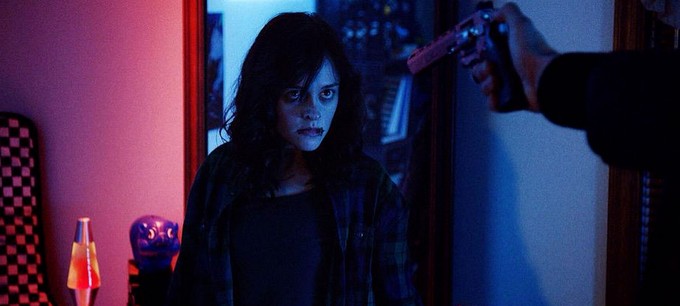
VINYARD: It sounds tricky to camera op and D.P. and direct. Do you think you’ll ease off one of those duties next time around?
BEGOS: I will eventually. I don’t know about next time. It honestly comes down to budget. I think that if I did get a D.P., I would still hop in there and operate, just because I really like doing that. I’ve always D.P.ed. I think I can do a serviceable job. I definitely think that there are people out there who can elevate the material. The problem is on a movie like this, when you’re shooting for so long in the middle of nowhere, even if you’re paying a D.P. the bare amount you can pay him, bringing a D.P. and a camera operator for close to eight things with food and lodging and all that on a $300,000 movie…that’s a lot of money that we literally can’t- we would’ve had to cut an explosion, a car flip, three days of shooting. As ridiculous as that sounds, it actually afforded us the ability to do a lot more, and also move a lot quicker. I’m just sitting there in the scene and it’s just me with the camera. The boom pole’s over me, and it’s me working with the actors. When I’m ready to shoot, everybody else has gotta get the fuck out of the way. It just works a lot faster that way. I’m there, I can look to my left and direct my gaffer how I want the lights changed, I tell my A.C. if I need a lens changed, then I’m just sitting there with my camera, and I can direct the actors and all that. It’s like the scene is the sun, and you have everybody else orbiting around you. I just think it works a lot better that way, so I think even with a D.O. I’d still get in there and operate. I also feel there’s something about being there with the actors as opposed to being in another room behind a monitor. That doesn’t appeal to me. There’s some D.P.s I’d love to work with out there, but we’re in this weird budgetary range where it honestly gives us a lot more room in other areas if I just shoot it myself. Same thing with Josh (Ethier), he does like sound design and the conform. He takes a lot of menial time, but it saves us so much money which allows us to do other creative things and really stretch our budget. It really comes out of a place of necessity now.
VINYARD: Josh, who you just mentioned, got a lot busier since ALMOST HUMAN. He didn’t have to pencil you in or anything?
BEGOS: Me and Josh have been friends since we were like 13, so the fucker better not drop me for something else, I swear to god! Hopefully we’ll just keep on working on stuff. He’s definitely editing stuff way bigger than what we’re making together now, but there’s definitely something about doing a project together, ‘cause he’s my producing partner so he’s there from the ground floor. It’s a lot different than when he’s an editor-for-hire for somebody he doesn’t know, so I think that’s what’s appealing about coming back and…not making any money.
VINYARD: What about the music? Both your music have great scores, but I was surprised to see you had a different composer this time, Steve Moore.
BEGOS: Steve Moore is someone I’ve wanted to use. He’s part of the band Zombie, and I wanted them to score one of my movies for years, even before I made ALMOST HUMAN. The music’s phenomenal, it’s the perfect combination of Carpenter and Goblin in a contemporary format. They use all old instruments from the ’80s. They use the same synths they scored TERMINATOR and HALLOWEEN III on. THE GUEST came out, it was scored by Steve Moore who does the synth and the bass in Zombie, and then he did CUB, which is a great score. I called him up right before we went to go shoot because they had his number on IMDB, and I was like, “Hey, I made this movie, ALMOST HUMAN.” And he was like, “Oh, I just watched that, I actually really liked it!” He liked the script a lot and he wanted to come onboard, even though it was kind of a low-budget thing. When I was temp scoring the movie, we used a lot of THE GUEST and a lot of the CUB score, a lot of Carpenter stuff and COLD IN JULY and IT FOLLOWS, to kind of give a basis of where we wanted to go. Then we talked and I told him exactly what kind of sounds I wanted in certain things, and then I gave him an entire pass and we kind of sculpted it from there. His first pass was pretty close and it sounded really good, and it wasn’t a whole lot of stuff we changed, just sort of sculpted and timed differently. Hopefully, Steve’s another collaborator I’ll continue to use on every movie ‘cause I really think that his score genuinely elevated the movie to another level.
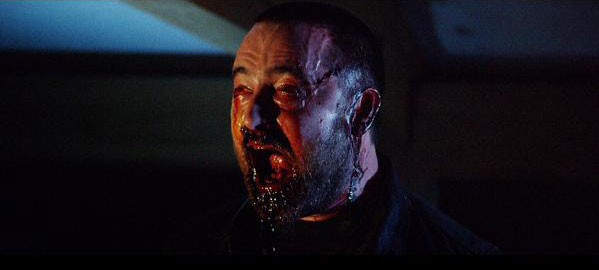
VINYARD: The score and the time setting and the influences are right from the ‘80s, like ALMOST HUMAN. Since that movie, the whole ‘80s homage scene has kind of exploded. You get all sorts of throwbacks, right up to the last movie I just saw Graham in, BEYOND THE GATES. You obviously love the films you’re homaging, so how do you do that in a way that doesn’t feel like a retread now that you don’t only have to distinguish yourself from the old stuff but also these knockoff ‘80s horror flicks coming out now?
BEGOS: The thing about a lot of these supposed ‘80s homages coming out now that really, really bothers me is that they’re all fucking winking and nudging. A guy gets his arm cut off and he sits there screaming at it while it sprays like a garden hose. It’s like, why don’t you fuckin’ show me what ‘80s horror movie had that, and then we can talk, ‘cause I don’t remember that in any of the ones I watched. I hate when people are doing it like that and poking fun at it and laughing at it, ‘cause that’s not why I like these movies, ‘cause they’re ironic and funny, it’s cause they’re fucking awesome, so we’re gonna make this movie like it’s a world class, A-level picture. I don’t care if we’re making it for a couple hundred grand with our friends, we’re gonna treat this like a goddamn drama like they did. In the ‘80s, they took that shit seriously. You had a million and a half dollars, you’re making a robot movie, it’s fucking serious. They’re not winking, they’re not joking, they’re not judging, I mean some of them are. For me, that’s the thing. I just want to make the most ridiculous story and play it straight. That’s what appeals to me about that. There’s definitely some good stuff coming out of it, for sure, but a lot of it is too winky, too judgy.
VINYARD: Tone is really tricky, especially when you’re dealing with extreme gore. You want the audience to enjoy it, a big splatter moment has a great impact on the audience when it’s done right, but you also want to keep them onboard with the movie. You just don’t want it to be a string of gags.
BEGOS: I think a big part of that is timing. A lot of people will just hold on a shot of blood shooting out of a guys arm or something like that. You gotta just hold on it so it’s enough to make you go, “Oh, fuck!” and then cut away from it. It comes down to how you time it, how you edit it, and how realistic those effects guys can make it look. You also don’t want to make it look goofy. If it does look goofy, you gotta figure out how to shoot around it to make it work and have impact. There was a lot of times, for instance, when Speredakos wanted to improvise some one-liners, and I let him run wild with that. In the first cut, we just had all of his one-liners in there, and now I think maybe 95% of them are excised. There was a couple of smaller things. We screened the movie. I’m a big fan of screening the movie, but for very carefully curated people who are going to tell me something is shitty and not just stroke me off for no reason. There are things we weren’t sure enough that everyone was immediately like, “Yeah, get rid of that,” so that definitely made sense. Listening to people you trust is very important, especially when you’re trying to straddle something like that.
VINYARD: You’ve made films on your own with a cast and crew of people you know and in locations that you’re familiar with, and distributed them through traditional channels. What have you learned about the state of low-budget distribution right now? How do you get a small genre movie like this in front of the right eyeballs with the host of ways to deliver content?
BEGOS: The festival circuit is so important. I’m a huge horror fan and I check iTunes every three days and all the websites, and there’s so many movies that I hear so little about and they’re kinda dumped onto iTunes and they just kinda come and go. With the festival circuit, not only does that get your movie out there, but for example, if you play at Toronto or play at Fantastic Fest, there’s never going to be a better screening than 1200 people at Midnight Madness or 300 drunk people in Austin at Fantastic Fest who live and die for genre movies. You’re never going to get better audiences than those audiences. Getting your movie into festivals and having people talking about it, even if it’s not a huge amount of buzz you’ll have a certain step up over the rest of the movies. I just think the festival circuit’s been very kind to me, thankfully. I have no idea why. If my movies just kind of came out on their own, they definitely wouldn’t have had near the amount impact. Distributors are willing to put more marketing dollars into your movie because it was a big festival. If you’re not at the festival, you don’t get that premiere, you don’t get that extra marketing dollar, it’s a whole different ballgame.
VINYARD: One thing the festivals might like about your films is that you can feel the passion behind your films, you can feel the cast and crew gelling together. I’m curious, going forward with bigger budgets and a more diverse crew, how are you going to maintain that distinct, personal, DIY kind of edge?
BEGOS: I just gotta keep pretending like I’m in high school making a short that nobody’s gonna see, and do it just for me. You just gotta stay true to yourself. If I do something where it has every single thing that appeals to me and I don’t have to listen to fuckin’ anybody, there’s gotta be some audience for it. There’s gotta be someone out there who wants to see that as opposed to me trying to figure out exactly what other people want. I just gotta keep writing stuff that excites me, and I want to keep the same crew members and keep the same people and get bigger budgets for our respective budgets and get out and do more. Hopefully those people get hired for other movies and learn a bunch that they can bring back to my movies, but it’s very important to me to keep the same crew going. Like I love EVIL DEAD 1 and I love the DIY aspect to it, but now we’re making our DARKMAN, how it still feels like Raimi, only a slightly bigger budget. Or our DEAD ALIVE.
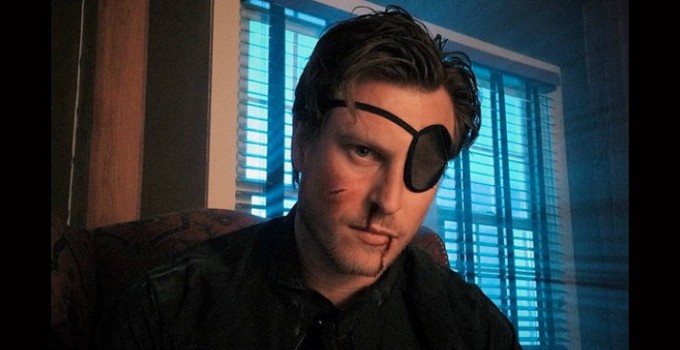
VINYARD: What is that? What’s the next move?
BEGOS: I’ve got a few different scripts I’m working really hard to get made right now. I have a satanic summer camp slasher I’d really like to do. I have a super gory time travel movie which is basically THE FLY meets TERMINATOR that I wrote with Mickey Keating. That’s a little bigger budget, so I don’t know if you’ll be seeing that one very soon. I have a really ridiculous werewolf movie that I’d like to me. It seems that the ideas I want to do now are getting bigger and bigger.
VINYARD: I read an interview where you said that 90% of horror movies these days are just people in a house.
BEGOS: Rich, white families in a house which you don’t know how they can afford because the dad’s unemployed and an alcoholic. It’s so fuckin’ annoying. I have no problem with people in a house. I just saw DON’T BREATHE, that’s fuckin’ great! MISERY is one of the best horror films of all time, just two characters in a house. If you’re going to set a movie in there, make a good script, make it fuckin’ awesome. How come in the ‘70s and ‘80s, a low-budget horror movie meant a bunch of different locations, a bunch of different characters, a bunch of different topics. Now, it’s like, “Oh, we only have four million dollars, so it can only be four characters in a house and nothing can happen because we’re so low-budget.” Go fuck yourself. Ti West made THE INNKEEPERS for a million dollars and that was on 35mm and that had better production design and intention than most movies and that all takes place in one location.
THE MIND’S EYE opens today in several theaters throughout the country, including the Village East in New York and the Laemmle Playhouse 7 in Pasadena where Joe, Graham Skipper, and producers Josh Ethier and Zak Zerman will do a Q & A with filmmaker Mickey Keating after the 7:30 showing. It’s also available right now on iTunes and VOD.
